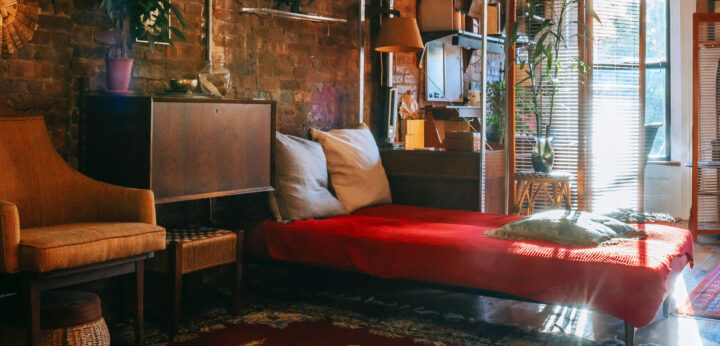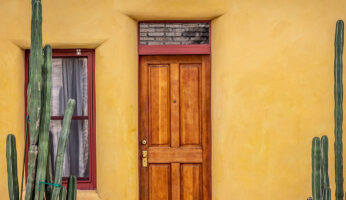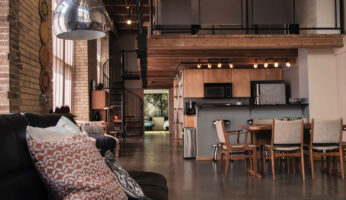Table of Contents
What does a studio apartment look like?
In a studio apartment, the kitchen, bedroom, and living room can all be found in one space, with no walls or doors separating them. Most studios feature a separate bathroom, but otherwise, one main room fulfills all of the apartment’s functions.
How big are studio apartments?
The average studio apartment size is about 600 square feet, but this varies widely. Whether an apartment qualifies as a “studio” or not depends on how many rooms it has, not on its size.
In some cities, including Los Angeles (which is known for having relatively large apartments for a major city), you can find studios as large as 700–800 square feet. By contrast, in densely packed cities like San Francisco and New York City, studio rooms can be as small as 300 square feet, which is about the size of a one-car garage.
How are studio apartments designed?
While studio apartment designs and floor plans vary, the general goal is to make the main living area feel as spacious as possible. To this end, studios tend to have high ceilings and large windows that make the room look bigger.
L-shaped or alcove studios
Many modern studio apartments, known as L-shaped or alcove studios, have a separate area that splits off from the main living quarters. This area still isn’t separated from the rest of the apartment by a wall or door, but it is offset from the main living area and usually feels like its own distinct space.
Typically, people use this alcove as a bedroom or private dining room, although you can change your studio apartment layout to suit your needs (with your landlord’s permission, of course).
In studio apartments without this alcove, many tenants and landlords use folding screens, bookshelves and other dividers to create private spaces and room-like areas.
What is the difference between a studio apartment and a one-bedroom apartment?
The main difference between a studio apartment and a one-bedroom apartment is that the latter has multiple rooms — generally a living room, a bedroom, and a kitchen or kitchenette. In a studio apartment, one room fulfills all of those functions.
Pros and cons of studio apartments
Before you decide which kind of apartment you want to live in, be aware that there are both pros and cons to living in a studio.
Pros of living in a studio apartment
Studio housing has three benefits:
Cheaper rent and utilities
Because studio flats have less square footage than regular apartments, they’re usually cheaper. For instance, on average, studio apartments are $200 cheaper than one-bedroom units in Portland, Maine.
Your utility bills for air conditioning and heating will also usually be lower in a studio suite because there will be fewer rooms to regulate. Similarly, renting an unfurnished studio is cheaper than renting an unfurnished one-bedroom because you don’t need to buy as much furniture. (If you’re moving into a new apartment, check out our first apartment move-in checklist to make sure you have everything you need.)
Smaller space to clean and maintain
When you live in a studio, you only have one room to look after. This means you don’t have to do as much work to maintain and clean your home, which is great if you’re a minimalist or just very busy.
Convenient location
Studio apartments are very common in city centers with good public transport services. If you work downtown or you’re a college student, you’ll usually be able to find a studio near your office or school, which means you won’t have to spend as much money commuting as your peers who live further afield.
Cons of living in a studio apartment
As appealing as studio apartments are, they do come with a few disadvantages:
Limited amenities and space for personal belongings
Because studio rooms are smaller than regular apartments, your unit might not come with all the usual appliances, such as a washer and dryer, because there wouldn’t be any place to put them. (And there’s a corollary — if all the usual amenities are included, your apartment will feel overcrowded.)
You also might not have much storage space, which limits how many possessions you can keep on hand. For instance, unless your studio has a walk-in closet (which isn’t unheard of, but is fairly rare) you probably won’t be able to have a large wardrobe.
Only suitable for one or two people
It can be difficult to live in a studio with roommates. You won’t get much privacy from one another because your home will have an open floor plan.
Also, because studios are small, they can easily feel claustrophobic when they’re packed with too many people. This means that a studio probably won’t suit you if you like to hold large parties or gatherings.
Most studio residents prefer to live by themselves or with just one other person that they know very well, like a significant other, and keep the number of guests they invite over to a minimum.






